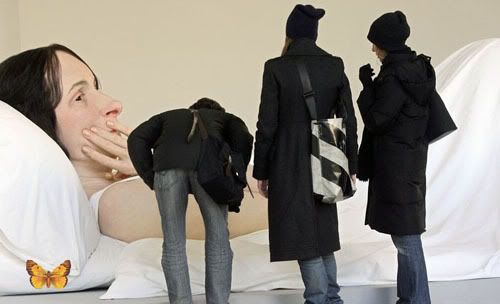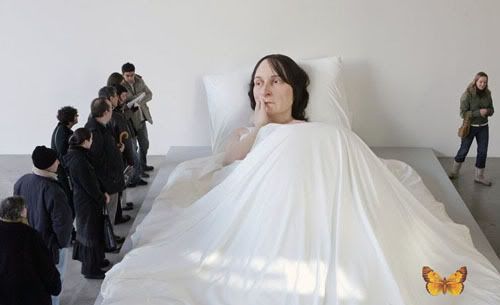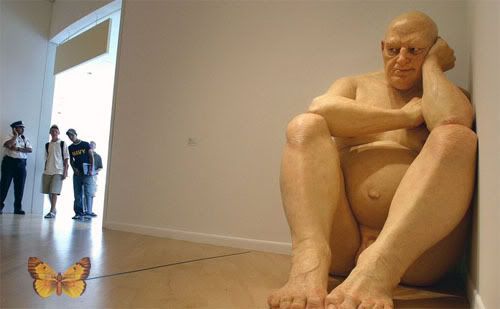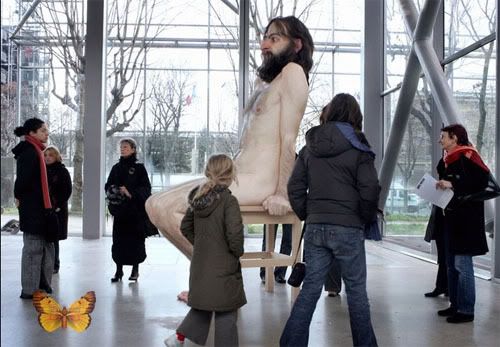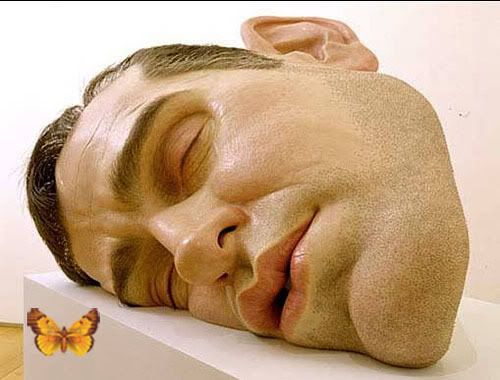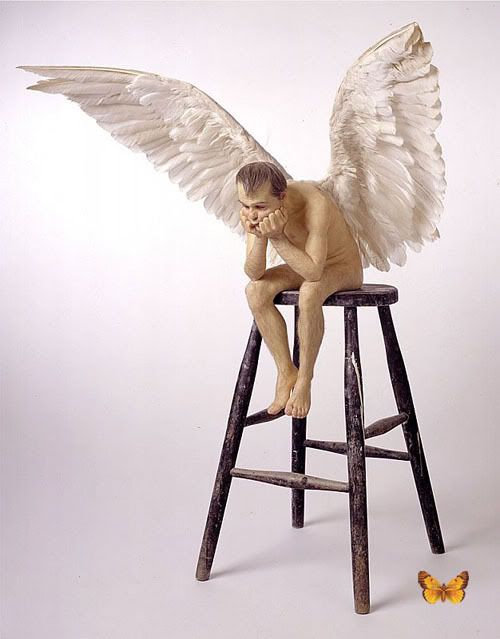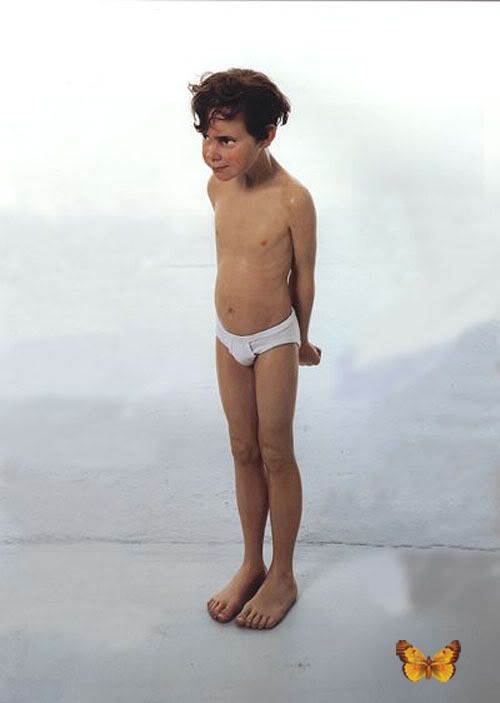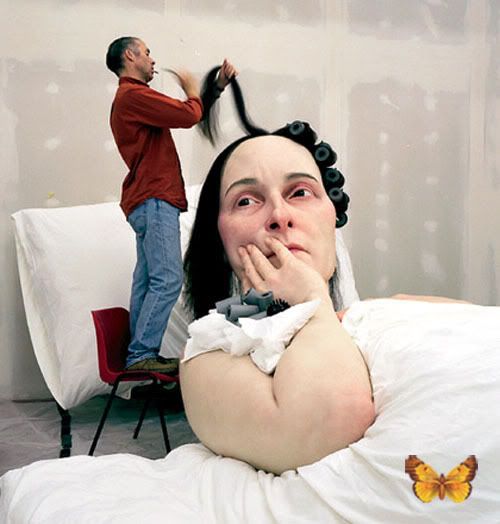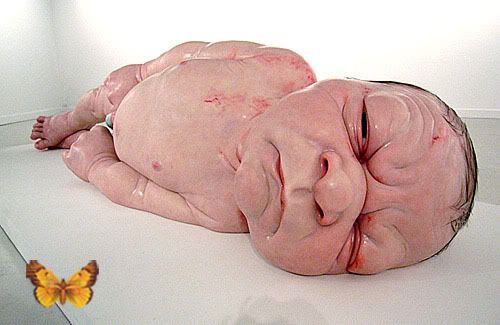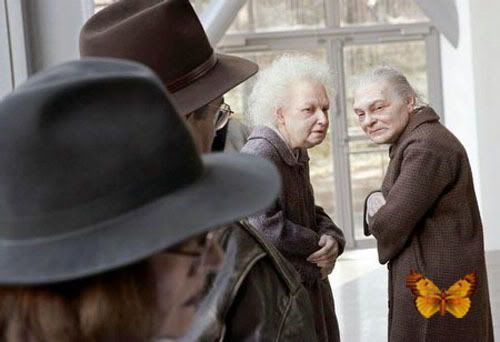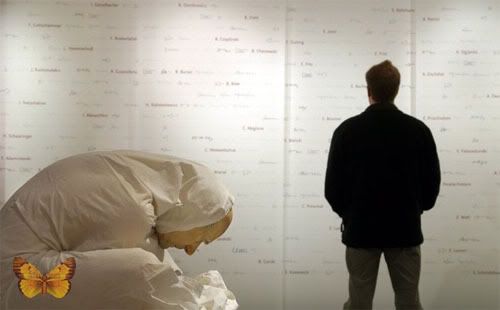 | Grand Prix 2011 "The Tree of Life": Great Events and Ordinary People
By Adrian MartinCinema cannot escape its essence. It can achieve the eternal only by unreservedly searching for it in the exactitude of the instant. (André Bazin, April 15, 1944)
Why should we be so scared of a cosmic or cosmological ambition in cinema? It has always been part of the potential — and destiny — of film to mix the smallest with the largest, the immediate everyday with the longue durée of grand history, the microscopic with the macroscopic. This drive has most often expressed itself — as in Murnau or Dovzhenko — in terms of an interplay between human affairs and the natural world: a meteorology of the emotions, a vast swirl of events grand and miniscule happening simultaneously but in different time-zones (temporalities, as we say today), at different speeds, projecting different worlds. Charles Laughton's sublime The Night of the Hunter (1955) — a film much admired by Terrence Malick, I gather — gives us an immortal image-thought about this, in its juxtaposition (within a single, magically tricked-up frame) of the two children floating down a river, escaping a malign destiny, and the frogs, owls and rabbits inhabiting the bank. Robert Bresson gave the image another, grimier kind of resolution in The Devil, Probably (1976), in which found footage of the planets (taken from experimental cinema) mixed with the barren lives of lost, beautiful teenagers. Jean Luc-Godard, especially in his work of the 1980s and '90s like Hail Mary (1985) and Puissance de la parole (1988) enthusiastically articulated and explored the micro/macro relation. Stan Brakhage (an enormous admirer of Malick) tackled it all in Dog Star Man and many other works; the avant-garde has frequently gravitated to it. Today, this ambition to mix the great events of the cosmos (or often large-scale History) with the everyday lives or ordinary people is everywhere in cinema. Sometimes the result has an avowed religious aura, and sometimes it does not — and the slippery zone of ambiguity between these two options on screen is what makes some of these films so captivating and intriguing, as it did decades ago in the work of Dreyer and what Jonathan Rosenbaum called his 'cinema of doubt' (in which there were, nonetheless, miracles). We find the trace of all this, in various ways and at various levels, in Bruno Dumont's Outside Satan, in Lars von Trier's Melancholia, in Patricio Guzman's Waiting for the Light, even in Mysteries of Lisbon by the much-mourned Raúl Ruiz. The Tree of Life is a veritable meteor in the sky of contemporary filmmaking. Many of the negative comments made about in the already thousands of pages devoted to it in print and on-line — alongside the often equally inarticulate reams of praise — are deadeningly normative. You just can't do that in a film, they cry! Do what? Mix the grand frame with the miniature vignette, the birth of the world with the birth of a child, the eons of time that attach to a scale of material becoming with the human time that attaches to the generations of a family. Mix the impersonal emanations of light and atoms with the painfully personal (indeed, nakedly autobiographical) fluctuations of feeling between three brothers and their parents in a house. Mix the historic dinosaurs with the toys and the lamps and the storybooks. Those dinosaurs. If you can't go with the dinosaurs, The Tree of Life is lost to you as an experience. Let's get this straight, right here and now. The scene is fantastic, and presents the entire movie (or at least the strata of it relating to interpersonal, intersubjective experience) in a microcosmic nutshell — here, more than even in Days of Heaven, Malick manages to make each fragment of the work a total encapsulation, a reflection or refraction or recreation of the whole. What do we see? A dinosaur, seeming pretty sure of itself, plods along until it sees a smaller, obviously weaker creature lying down. What does it do, what is its reflex? It stomps on the neighbour, his foot to its head! Then takes the foot away, but keeps it hovering. Some movement from the poor creature below. More gently — but still definitely — the foot gets put back on the head. Then, even more gently removed. It's established, finally: no real threat in this 'first contact' (we're back to The New World …), this encounter. The bigger dinosaur goes on its way. All interactions in the film rather like that: apprehension, doubt, fear, the ever-present hint or threat of violence; as well as some tenderness, consideration, maybe even compassion. Has this got anything much to do with a God, a deity of any kind watching over and planning out the moves? Not really. As has been observed, Malick has made a timely film that appears to bring both the wondrous 'first moment' of Creationism together with the wayward, hands-off, unregulated path of Evolution. Logic and Chaos combined. Because in Malick's universe, as in the philosophy of Simone Weil, a God may be in the deep background somewhere but he is a long, long way off, and not intervening at all. Not answering our prayers. And all we have in the Here and Now — which stretches to Infinity — is a cycle of suffering, inexplicable suffering. There are pockets of ambiguity in the telling of The Tree of Life that catch up its viewers and reviewers in intriguing ways (the same thing happens with Claire Denis' films). Like with the put-upon soldiers in The Thin Red Line, it's not always easy to tell who is who, whose voice we are hearing on the soundtrack, or be able to tell near look-alikes apart. That kid who dies swimming, is he one of the central three brothers? I immediately found myself straining to catch a glimpse of all three of them alive again, as the shots and the bodies flew past me. A terror or dread in this, which unfolds from end of the film to the other. And likewise, ambiguities in the shuffling of chronology, and in the quite frequent recourse to imaginary, dream-like images — visions of the purely possible (mother floating, boy in an open grave, a chair moving, the house full of water … ). Near the start, tragic news is delivered: the death of a beloved son. Then we go back and, for a long time, on my first viewing, I figured it was the particularly sullen kid, so prone to bad moods and inchoate rages, who was the one marked for death. Wrong. The mark of death, in the universe of this Distant God, hovers over all of us and picks its victims with a randomness that will never make any good sense. And most of the religious talk we hear snatches of in the film (church scenes, sermons, platitudes of faith and belief) is just the sum of what distracts us from this senselessness. Forget the 'way of grace and the way of nature'; Malick's films have always erected such binary categories only to demolish them, confound them, reveal their subterranean connections and complex interrelationships. The Tree of Life is about what the great filmmaker Ken Jacobs once called the 'mystery of personality': why does one person pull through the endless hard times that a lousy world bequeaths us while his/her brother or neighbour or best friend does not? Anyone — and not the one you necessarily expect — can take a wrong turn in this film, a swirl or an eddy amidst all those cosmic waves, be transformed by a mood, by a 'bad thought'. A Spinoza-ist film in this sense, like those of Philippe Grandrieux. Incredible scene of the father and son finding their way to playing music together, a simple but lovely piano and guitar duet — but then the brooding brother, off to the side in the yard, excluded from the rapture. Moments of illumination can come, too, fleetingly, when it is least expected: out of nowhere — and epiphanies are always like this in Malick's cinema, never signalled or underlined or prepared for, easy to miss, in fact — the father speaks in his voice-over of having dishonoured it all, missed the glory … A lot of normative nonsense is declared about how the characters here lack detailed, three-dimensional psychology, how their rapport is as facile, stereotypical and predictable as in The Great Santini or somesuch. But films don't need those kinds of characters: not Malick films, anyhow. All that's required — it has been enough for Godard, Tarr, Carax, Bartas, Ferrara, Jancsó and so many others — is that a character be a figure and that the actor have some presence. Meaning: their role is, from the outset, known, a repetition, a type, an icon ('father, brother, mother': we hear this litany of names and roles frequently in Malick). Meaning: what the living performer brings to it, in contact with all the material properties of film on the move, is a constant transformation, constant metamorphosis. Who needs psychological backstory when you're so close to the raw affects of solitude, of pain, of desire? In this first Malick film to offer any kind of conscious, anthological recapitulation of his past work, there is the scene — the scene of first love, first desire, between boy and girl in the classroom — that takes us right back to Kit and Holly in the leafy, wide, suburban street in Badlands: always, Malick starts from what is larger than real life, 'eternal' in Bazin's sense, in order to immediately plunge right down into the tiniest world of sensations, of moment-to-moment identity-change. And The Tree of Life comes further into this realm of the microcosmic self than he has ever dared go before. The more I watch The Tree of Life, the more I am astounded by its tightly woven, poetic structure. It's an utterly free but also extremely controlled film. Poesis in cinema is not a matter of tasteful music selections or pretty cinematography (to which some have regularly tried to reduce Malick's work — too pretty by half, and what a mix-tape of modern classics!). Beyond the metaphors and symbols that act, here and there, as familiar anchors — birds in the sky, open doorways in a landscape, water, air — there is all the more elusive stuff. This is an astonishingly rapid film, never lingering, flying on and past so many years, so many feelings, so much experience. It takes on an entire developmental gamut from birth to adulthood, with every pot-hole in-between delicately mined. The enigma of the Other and the motif of Encounter, for example — as announced in the dinosaur scene — takes on many shapes and variations, from bewilderment to brotherly trust, from murderous or just plain callous cruelty (put your finger in this electric socket, or against the tip of my air gun) through to the disconcerting, social experience of the crippled or the dispossessed out along the town's main strip. I have heard and read many engaging, inventive attempts to say what The Tree of Life is fundamentally 'about' — not like a secret to be uncovered, more like a guiding thread to be discovered, somewhere in the weave. Curious details insist, and differently so on each new viewing, as if a slight alteration in one's own angle changes the perception of the whole (how the word 'experiment' comes up twice, in two different time-slices, for instance). It is (for instance) a film about running, about movement: Murnau with a Steadycam. It is a film about a house, or rather the metamorphosis of a house (a home) into many houses: filled, emptied, packed up, left behind, refilled, remade. Precisely the film of a domestic, familial interior that, so far, Malick has resisted shooting in his career, perhaps because (as Neil Young sang in 'Helpless') "all my changes were there". Every individual open to the film finds — often in a delighted shock — some miniscule detail directly from their own young lives (for me, it's when Dad at the dinner table asks: "And what have you learnt today, my fine-feathered friend?"). What joy in the scene when the kids — suddenly free of the crankiness and forbidding ways of the Father — tear loose and run wildly from room to room, slamming doors, bringing in lizards, roping their mother (despite her civilised reluctance) into the infectious sense of abandon. Again, the whole film is summarised there, just as it everywhere: the superb editing that whisks us into and out of gestures and movements with hardly a second to register them, the overlay of Couperin's 'Les Barricades Mistérieuses', the physical improvisation (how many superbly unreadable gestures there are in this film, as if little Edmund from Germany, Year Zero had been resurrected, or indeed never died, and remained an inscrutable, solemn child, playing in the ruins, eternally). It's curious to me that some champions of the film try to tie it down to a schematic, reductive kind of sense, shape or form: it's all inside a guy's head, cosmic visions and all! Actually, there are clues to that feed such an interpretation (just as there is some evidence for the film being a kind of Owl Creek all-life-rushing-past-at-the moment-of-death vision), especially when a boy asks his mother something like: "Tell us a story of from before we can remember" – and, of course, The Tree of Life, in its totality, is something like that very story, a tale of origins and the effects spiralling out of from every small existence (the Butterfly Effect!). But why do we need such a frame to rein the film in and explain it? Movies should be made to get us out of heads (especially our own), not lock us inside one. Or, better: films should dwell and dance in what Raymond Bellour called (his example was Ritwik Ghatak, another micro-macro artist) the "ever-tested limit, so difficult to touch, between interior and exterior, realist image and mental image, perception and hallucination". Most articles on Malick (mine included) like to heavy-hit from the outset with a prefatory nod to a Great and Deep Philosopher: Heidegger, Plato, Weil, Cavell … Yet, while we know that Malick has swam in these waters, I wonder whether, with the years, he has also worked (this is pure speculation) to divest himself of some good deal of this apparatus of learning, this cultural and intellectual sophistication. In any rare report of public speech, he only wants to talk innocence, freshness, spontaneity, childhood perception. Like Brakhage or Grandrieux again: Eden before the animals were named, before our adult identities are fixed, badly congealed, inescapably neurotic. It is like reading Daniel Stern's The Interpersonal World of the Infant, with its system of 'emergent senses of self' all co-existing in the same growing child, and lurking around forever despite our best efforts at erasure and repression: those superimposed selves takes in the most abstract rushes and washes of affect all the way to the most powerfully symbolised moments of ethical choice and destiny-formation. Malick, it seems, always has a plan (some kind of launch-pad script) but the plan flies off. Like Wong Kar-wai he (as Cronenberg's composer Howard Shore once described the process) 'starts wide', explores all possibilities, then contracts, filters, shapes. It is as noble as any other way of working, and riskier than most of them. Industry-norm types like to mock directors who hack out whole streams of material in this manner or produce multiple cuts: they just don't know what they're after, what a waste of resources! But I like it that Malick names his film after a Miltonic Tree of Life that we see planted by Dad when one of his children is young (classic set-up for a Kazanian developmental narrative: A Tree Grows in Waco), but (as far as I've noticed) we never return to — just as Sean Penn's character's apparently crumbling marriage is no more than a bitter bedroom glance and a postural lassitude of the body. But why linger? The Mother-figure in Anne-Marie Miéville's twin-film to Hail Mary, Le Livre de Marie, said it well: "When a thing stops moving, it's dead".
Adrian Martin
© FIPRESCI September 2011
IN: Fipresci - Home Awards - Grand Prix, http://fipresci.org/awards/texts/gp11_malick_amartin.htm
| |





